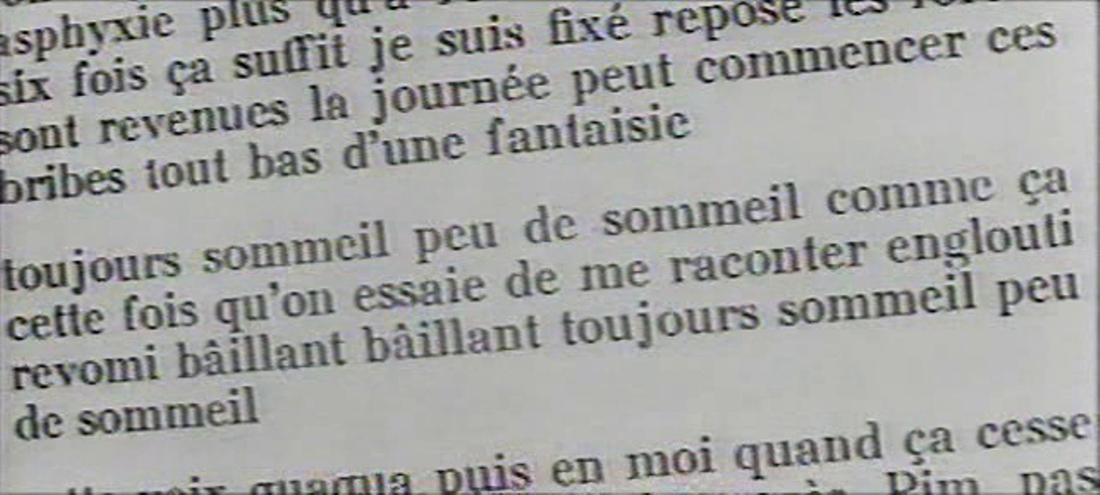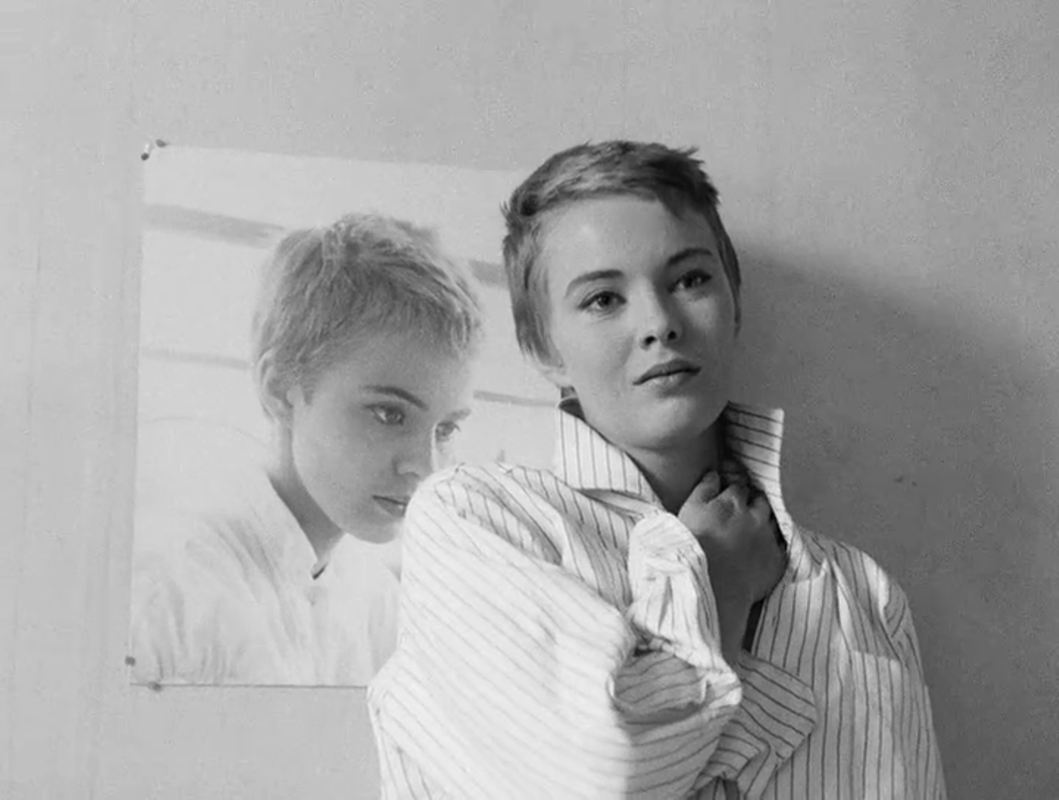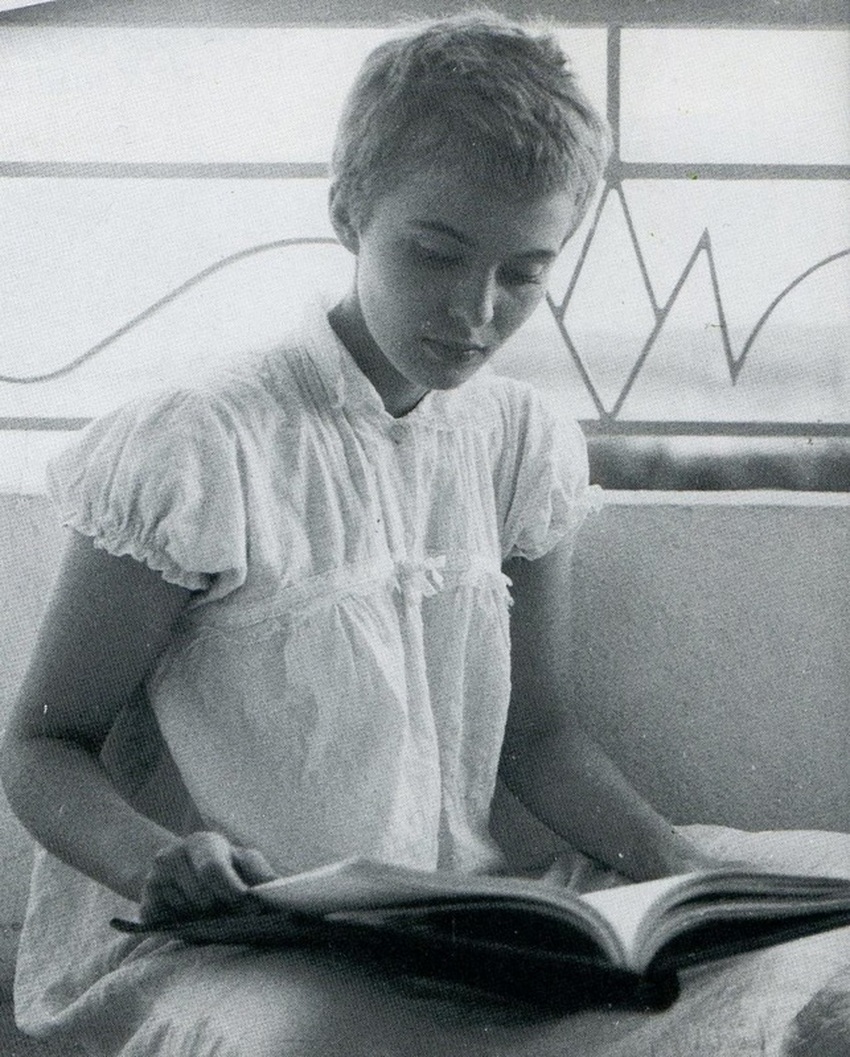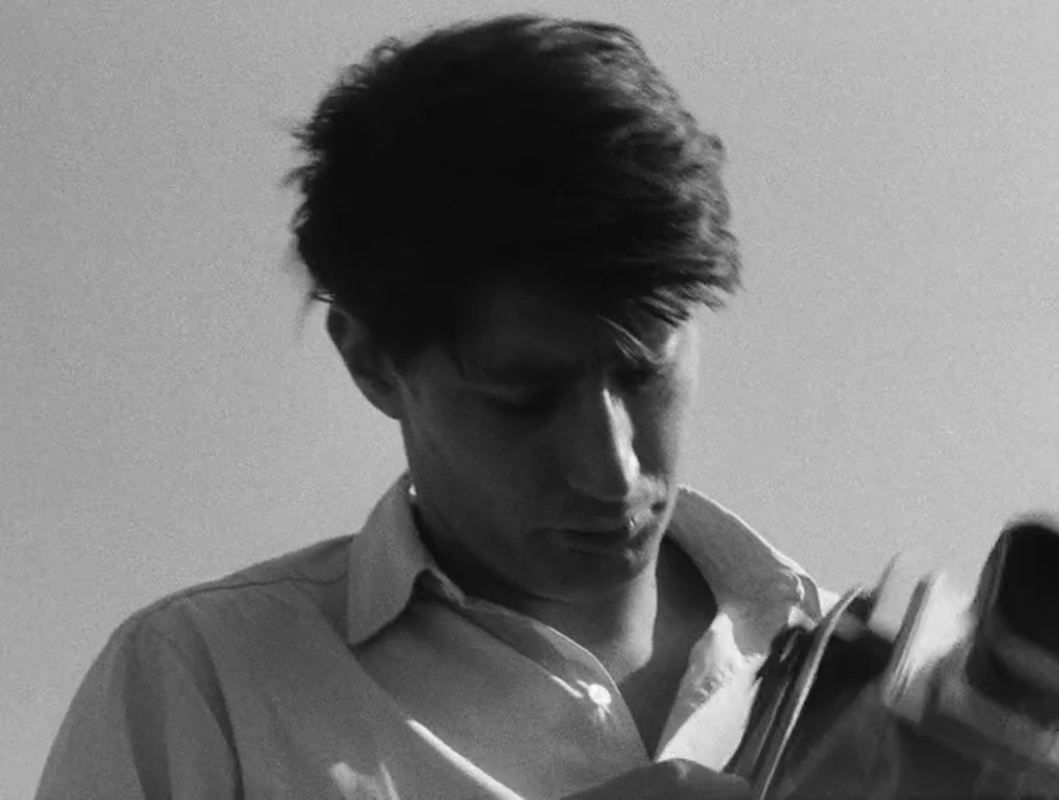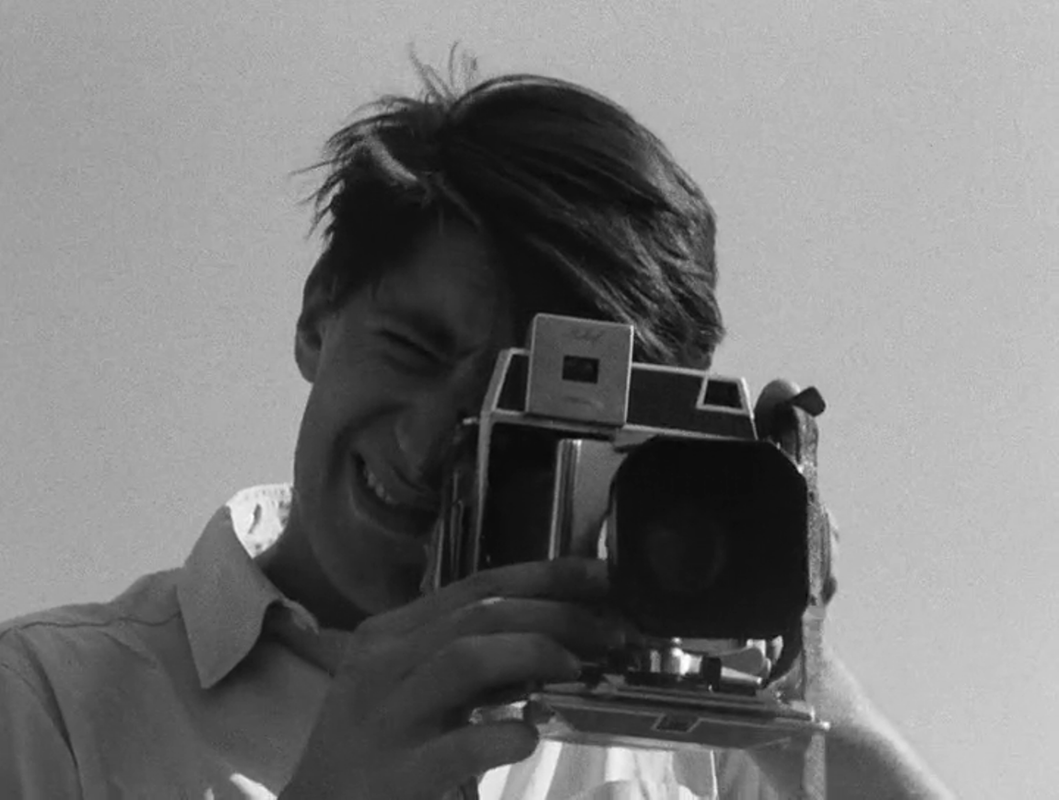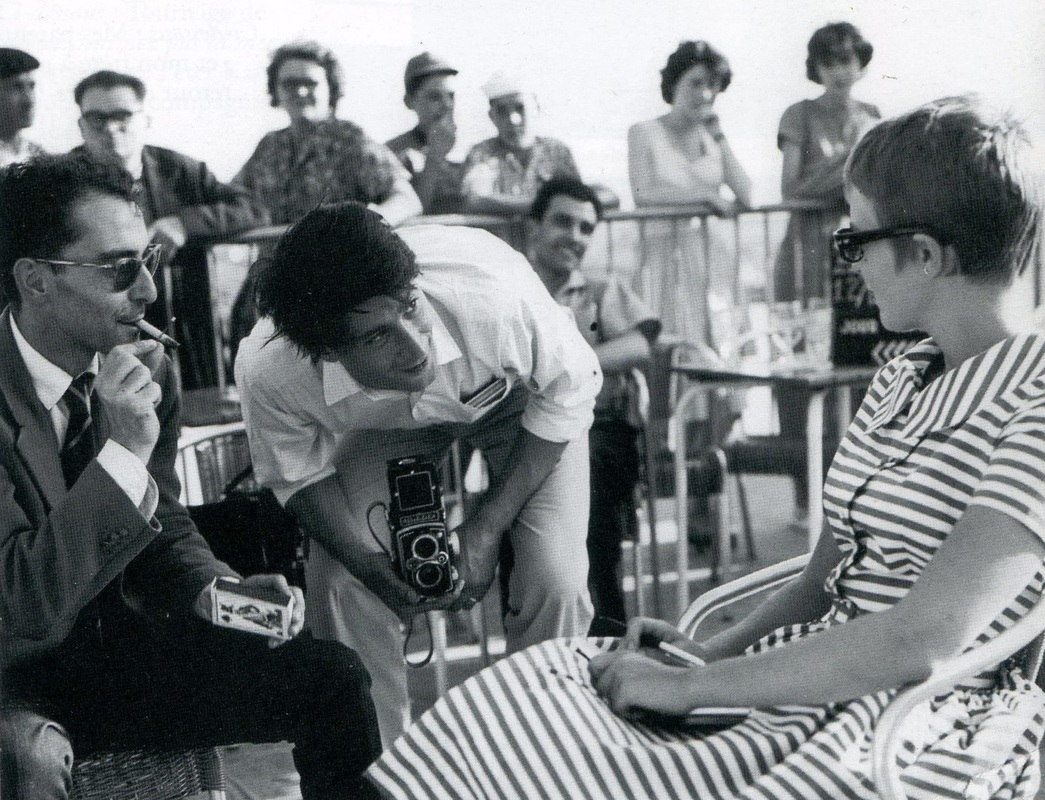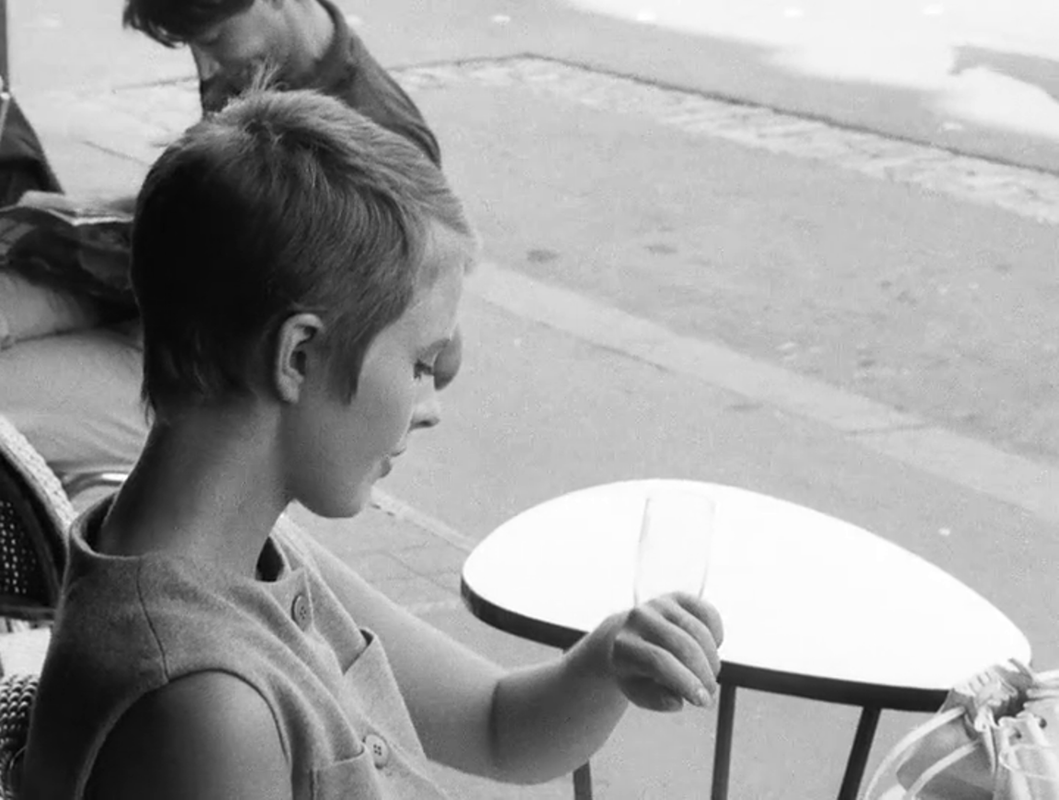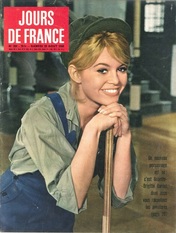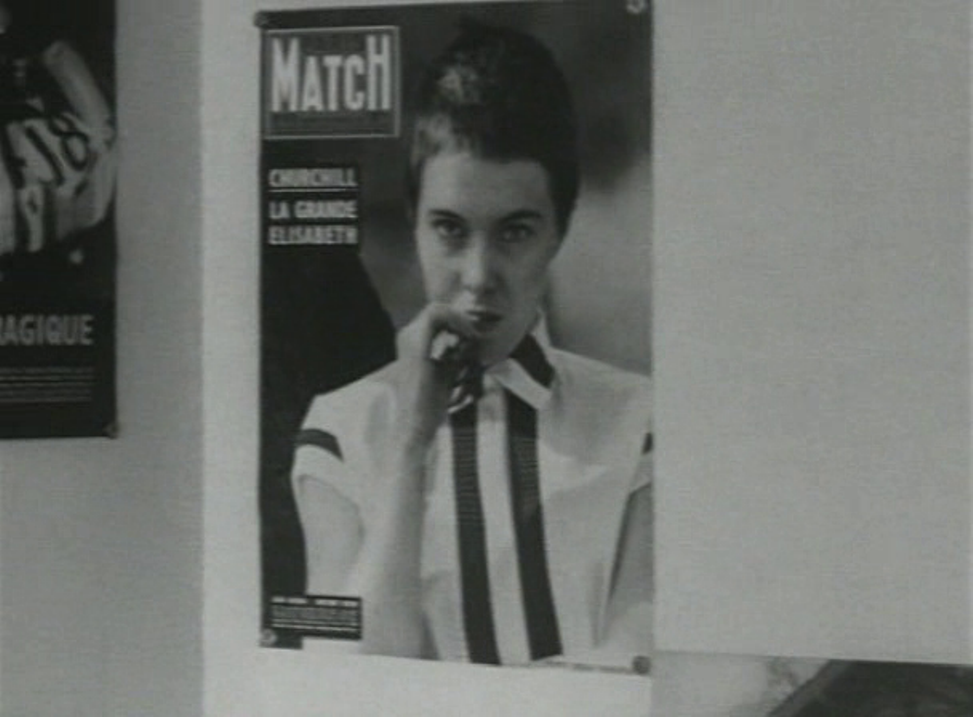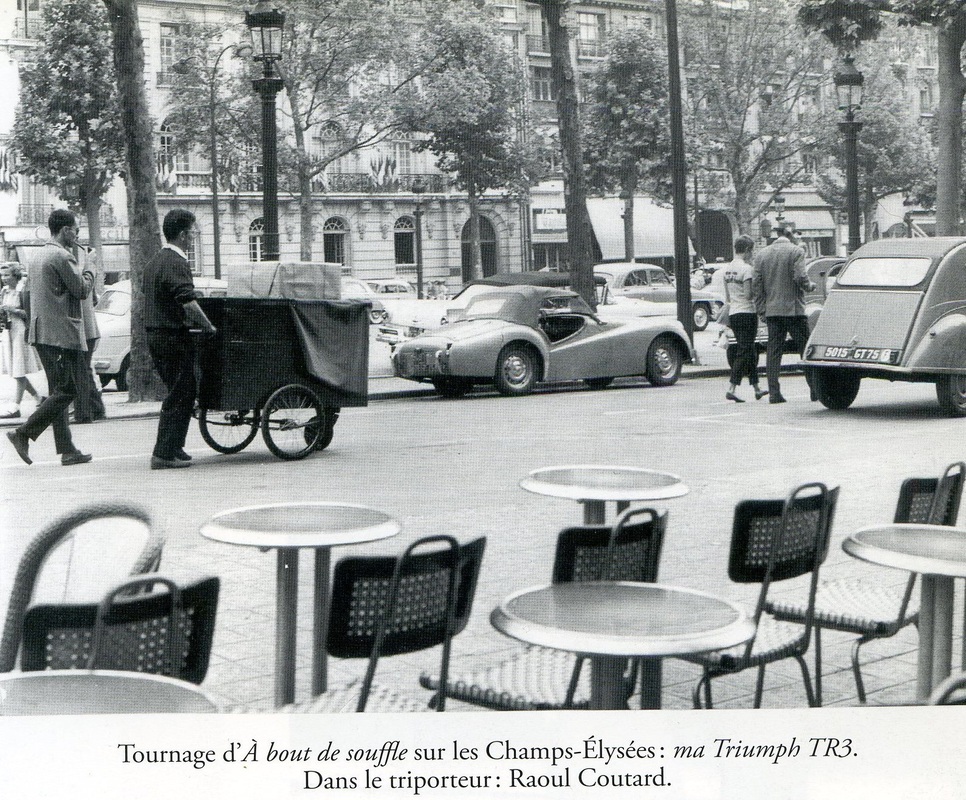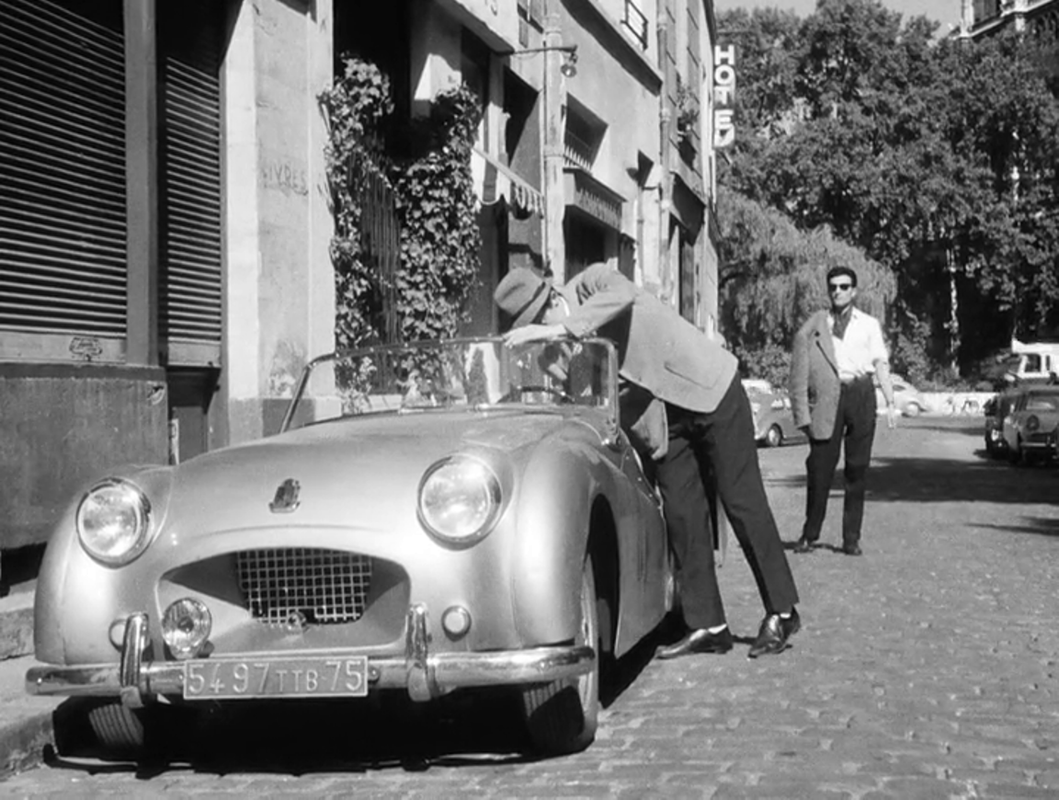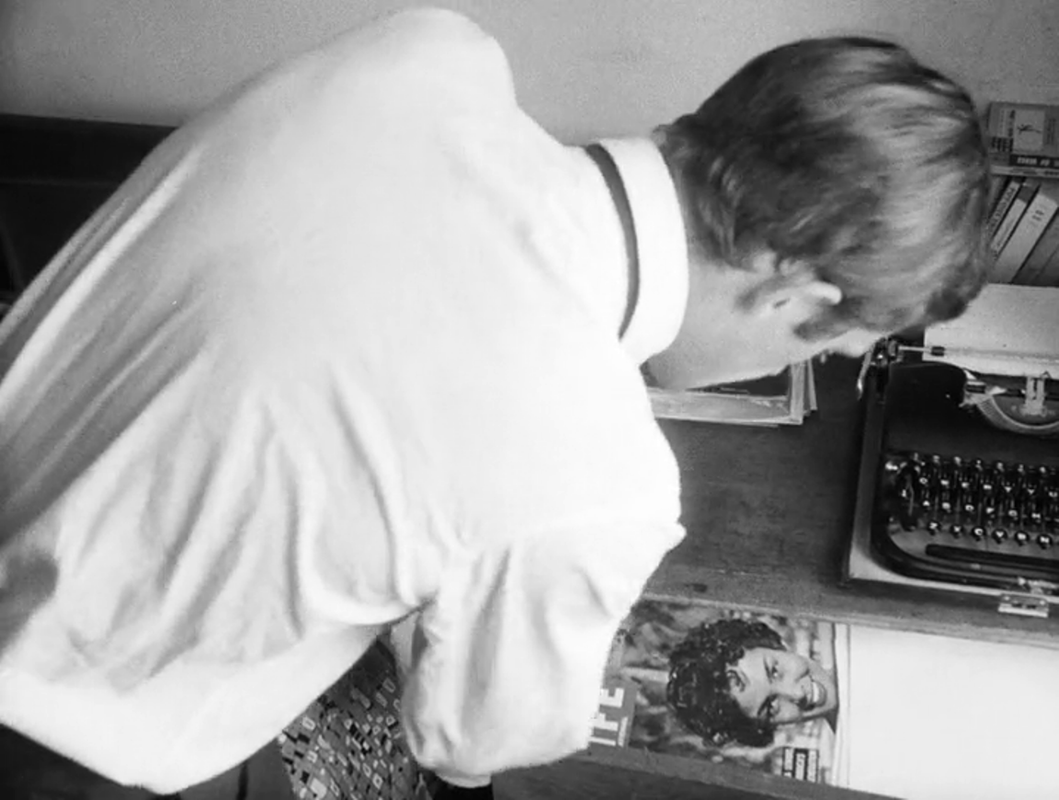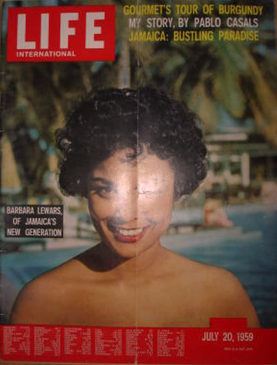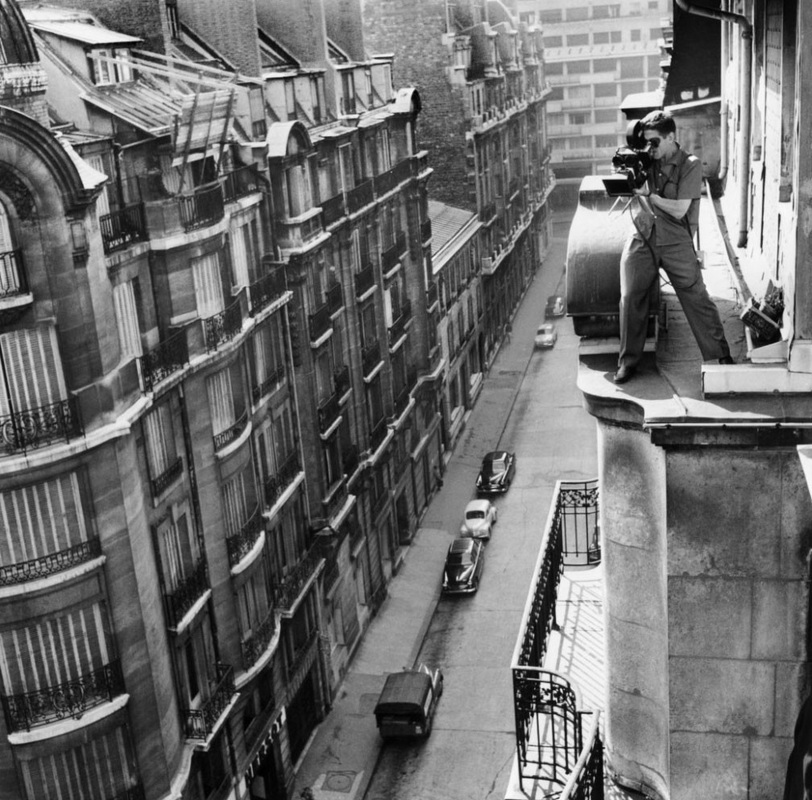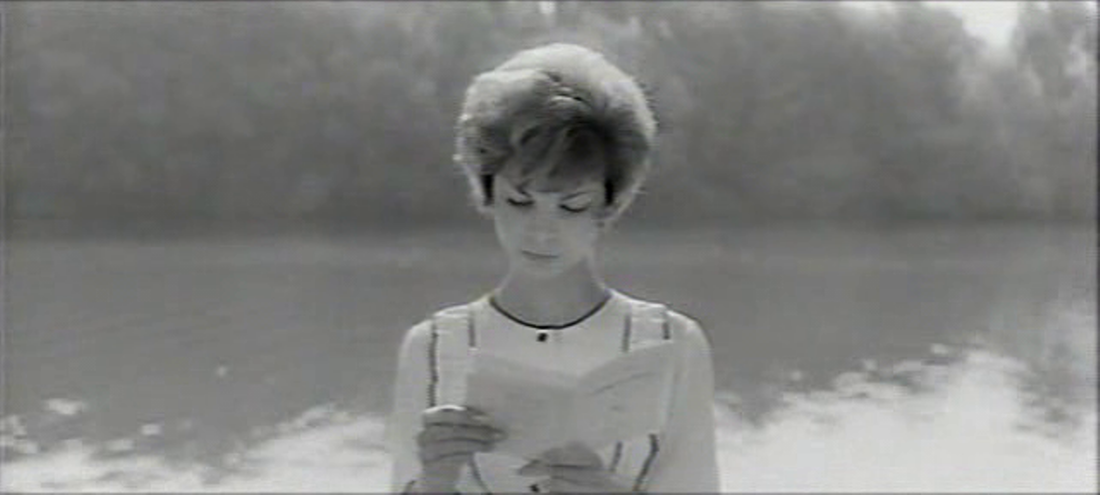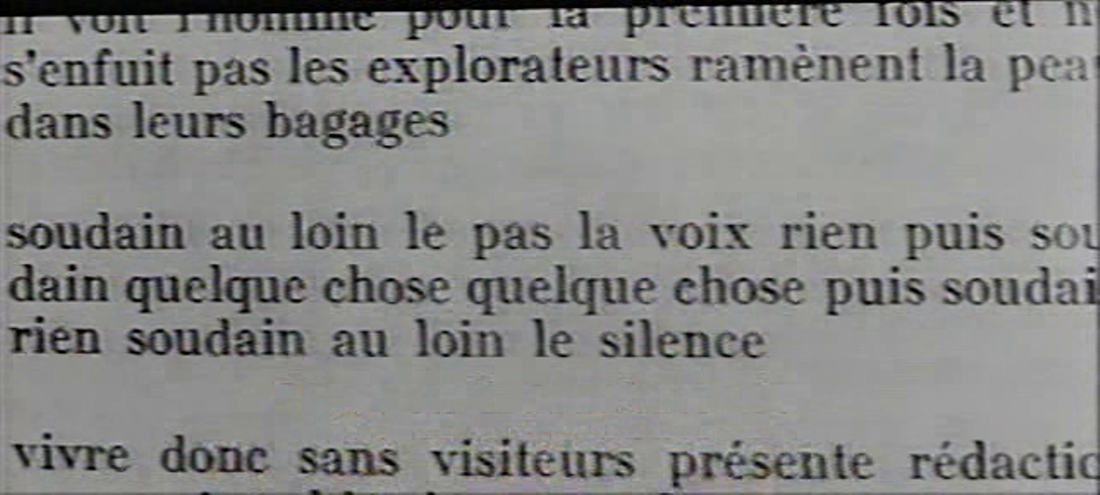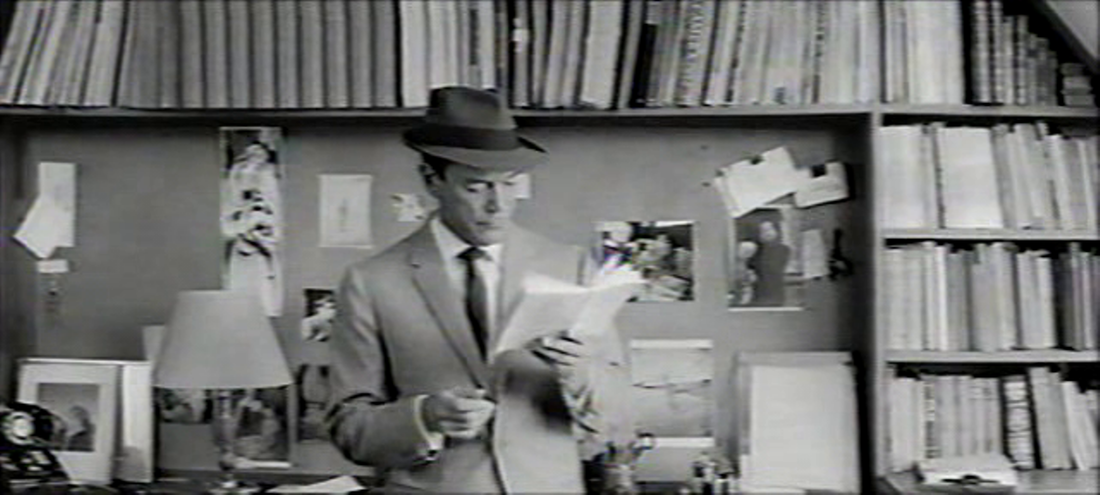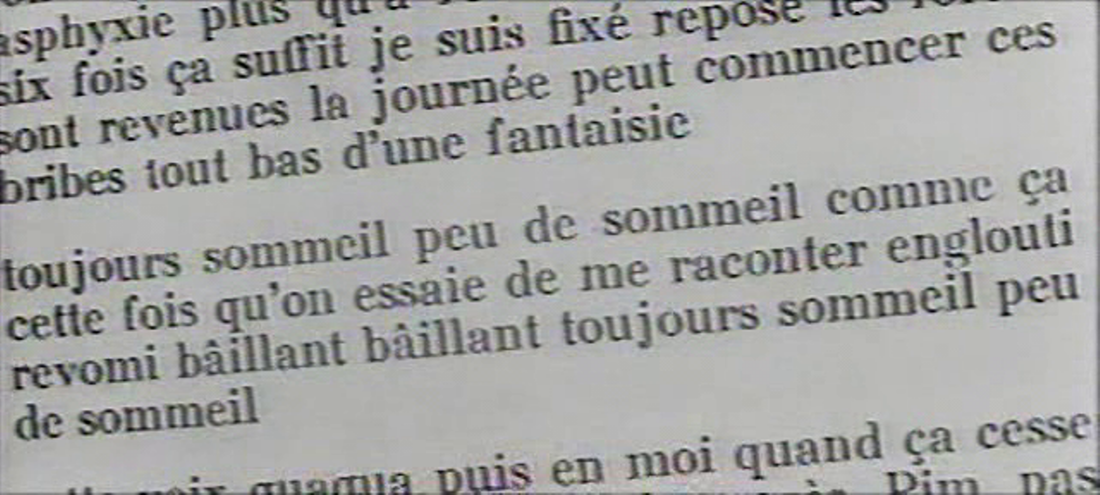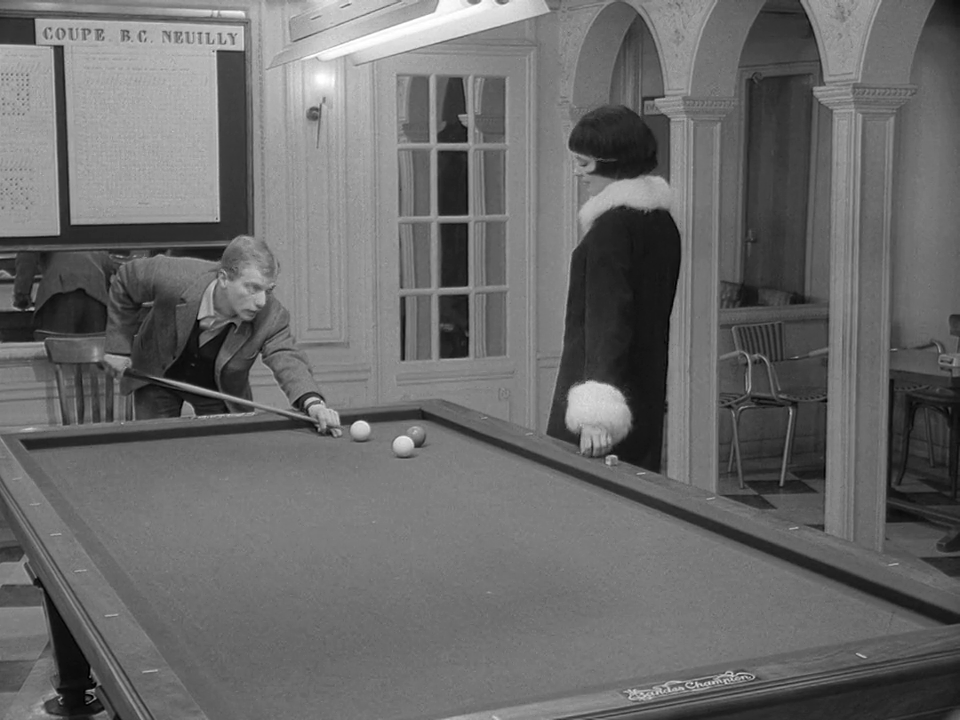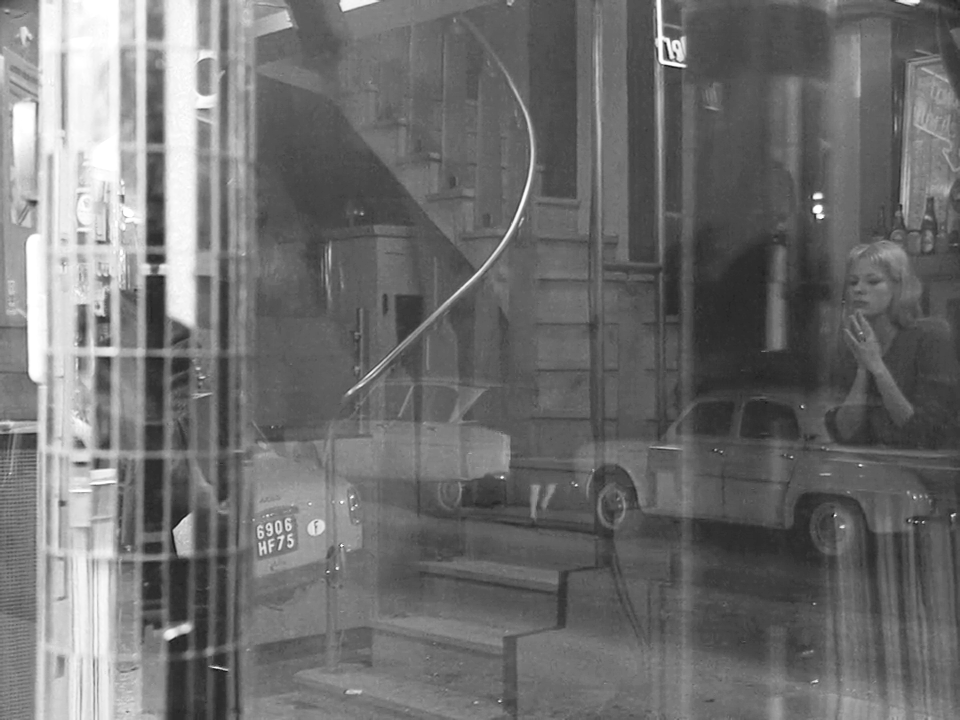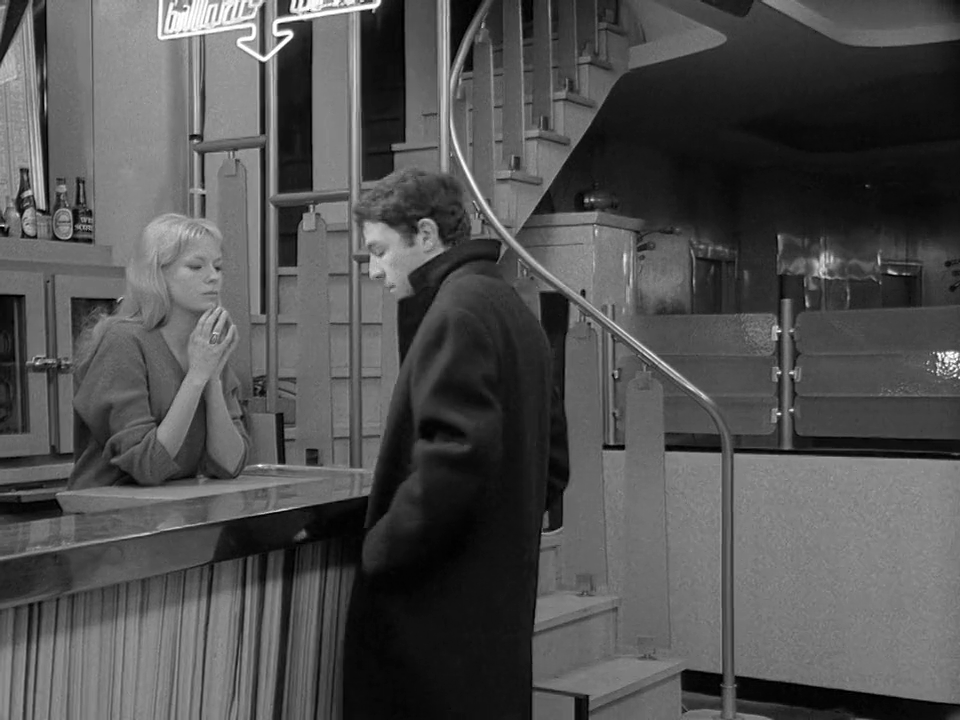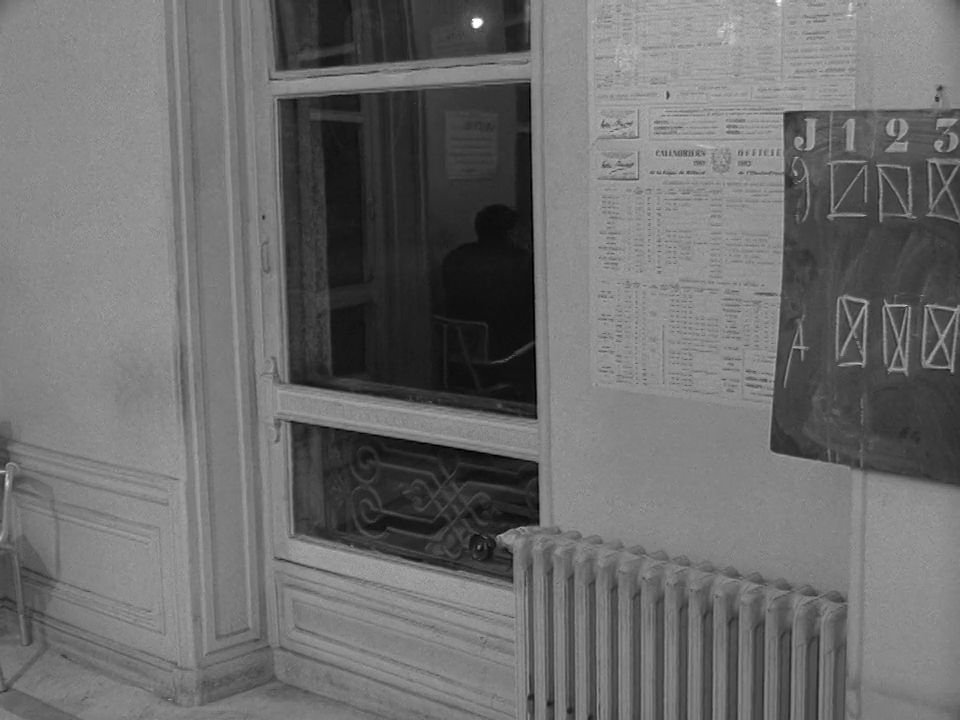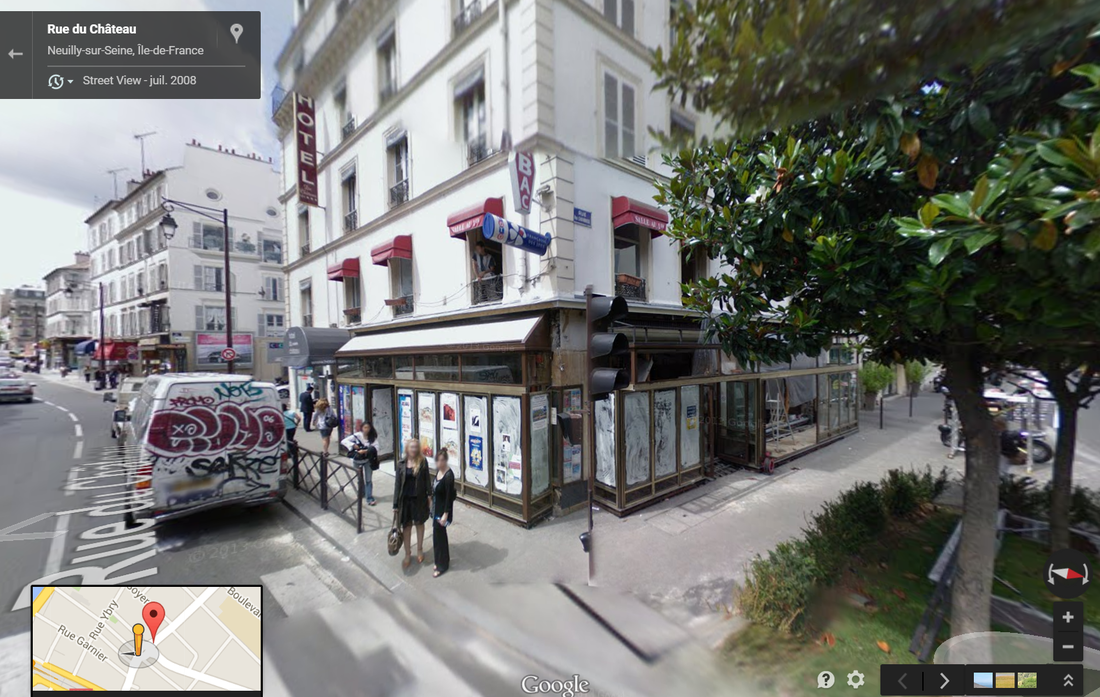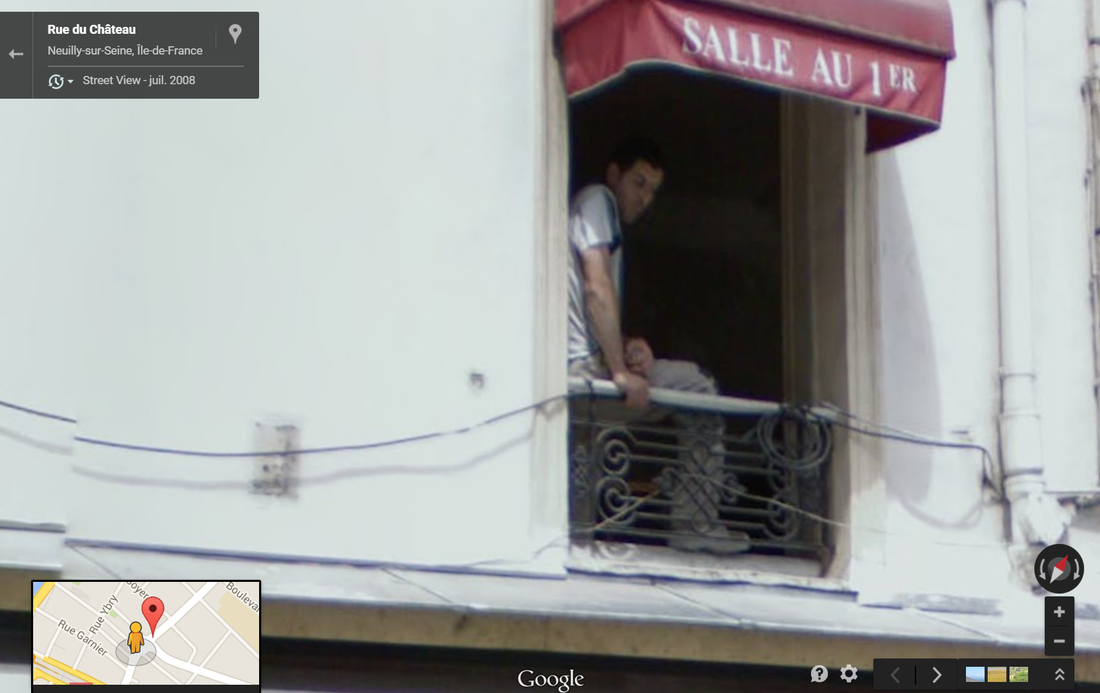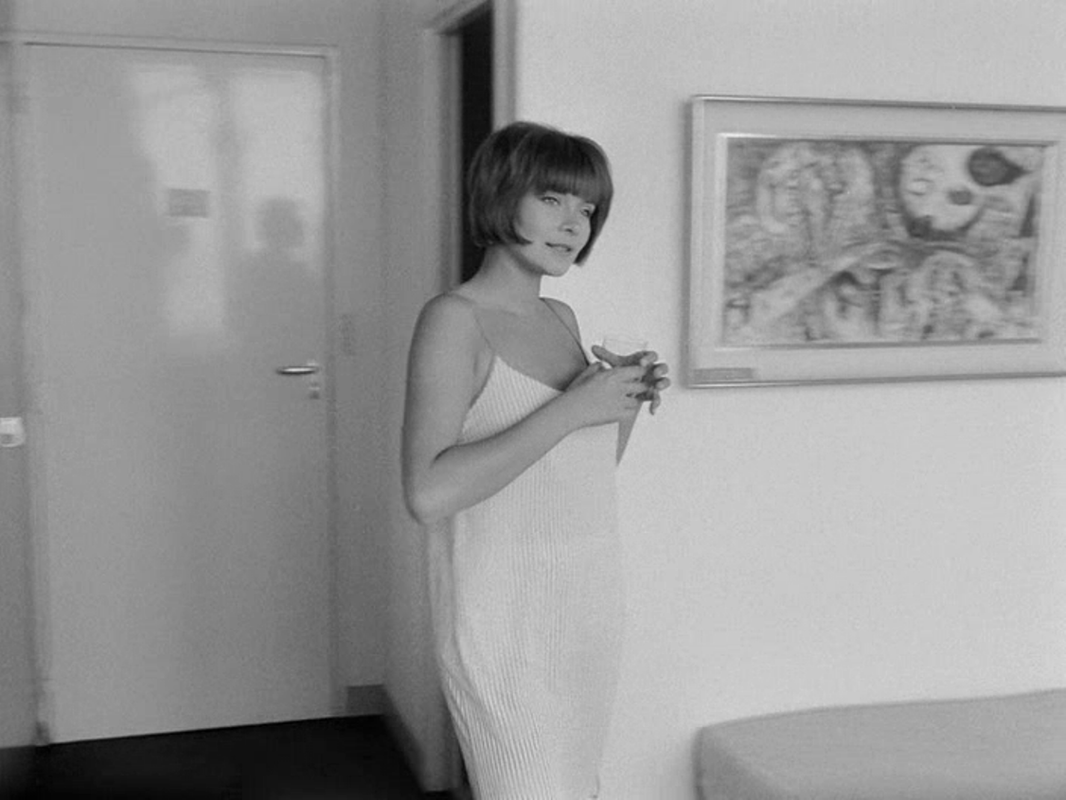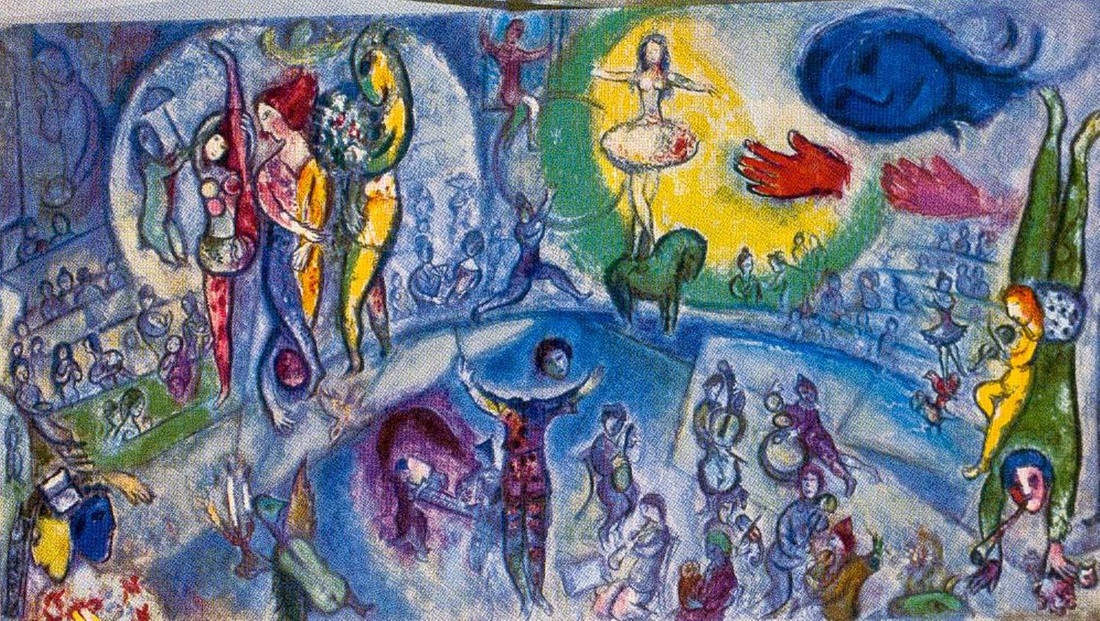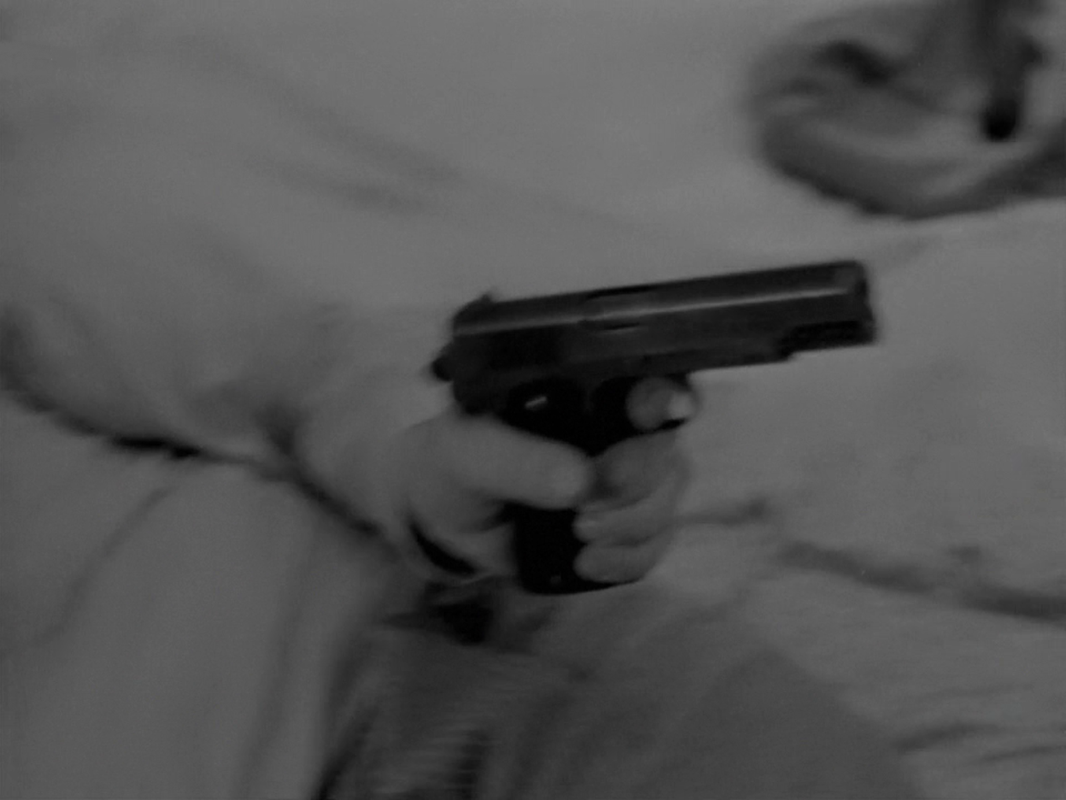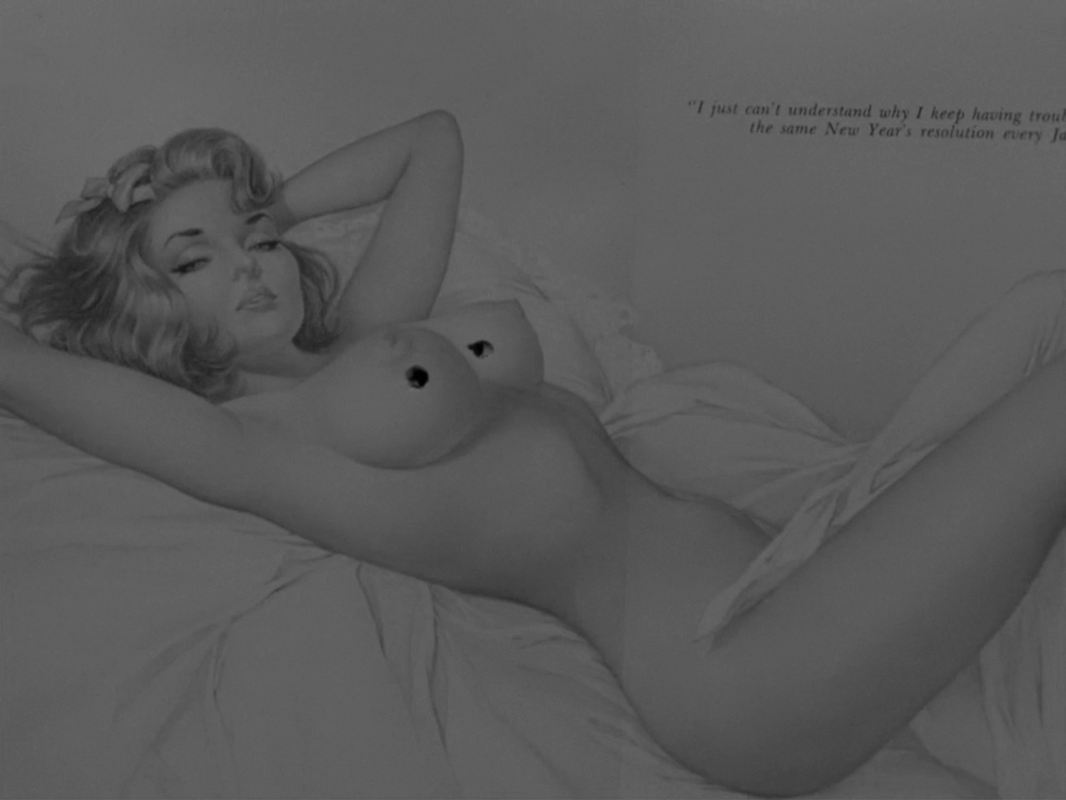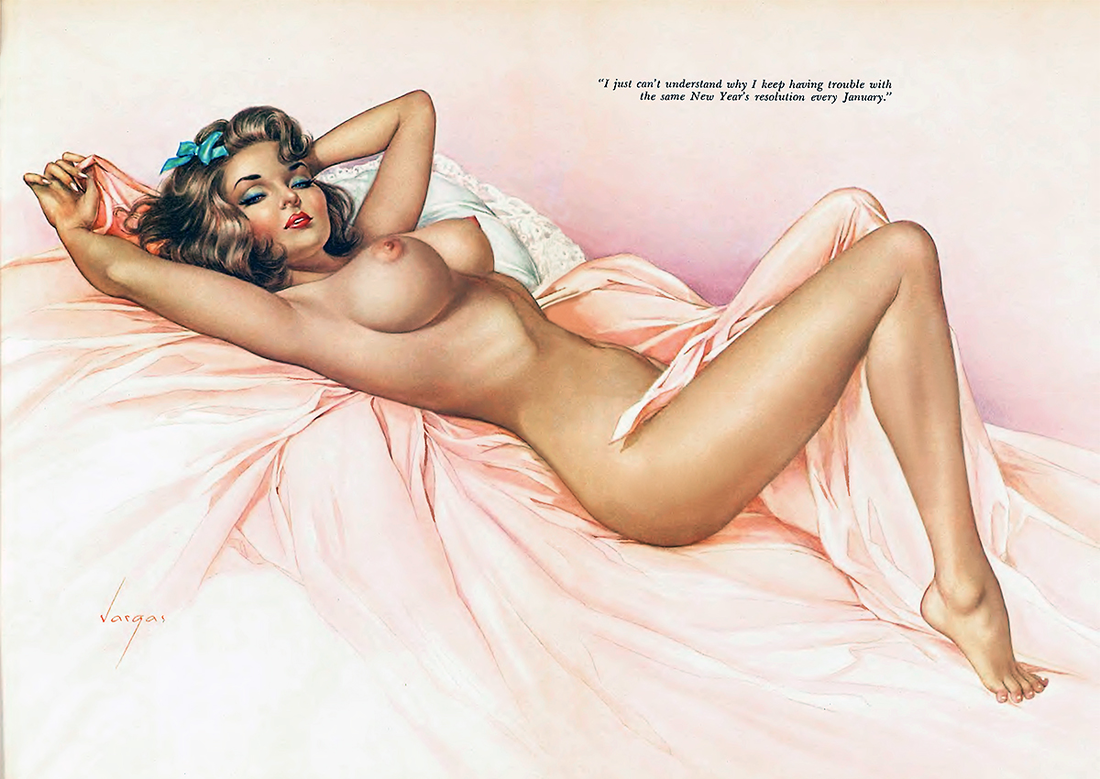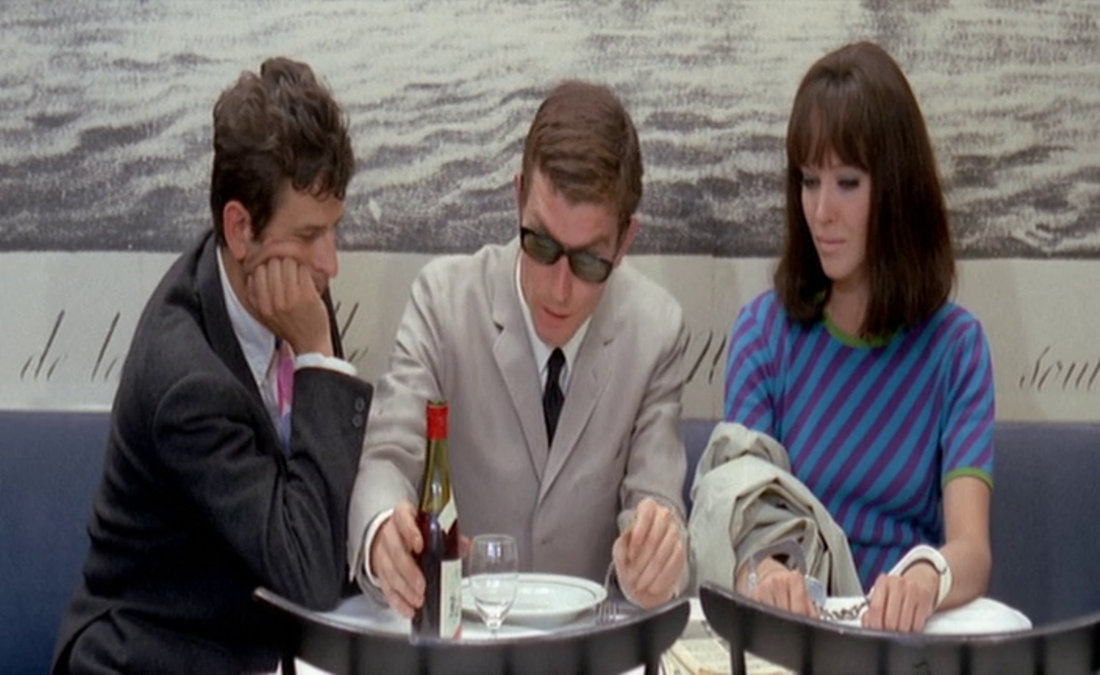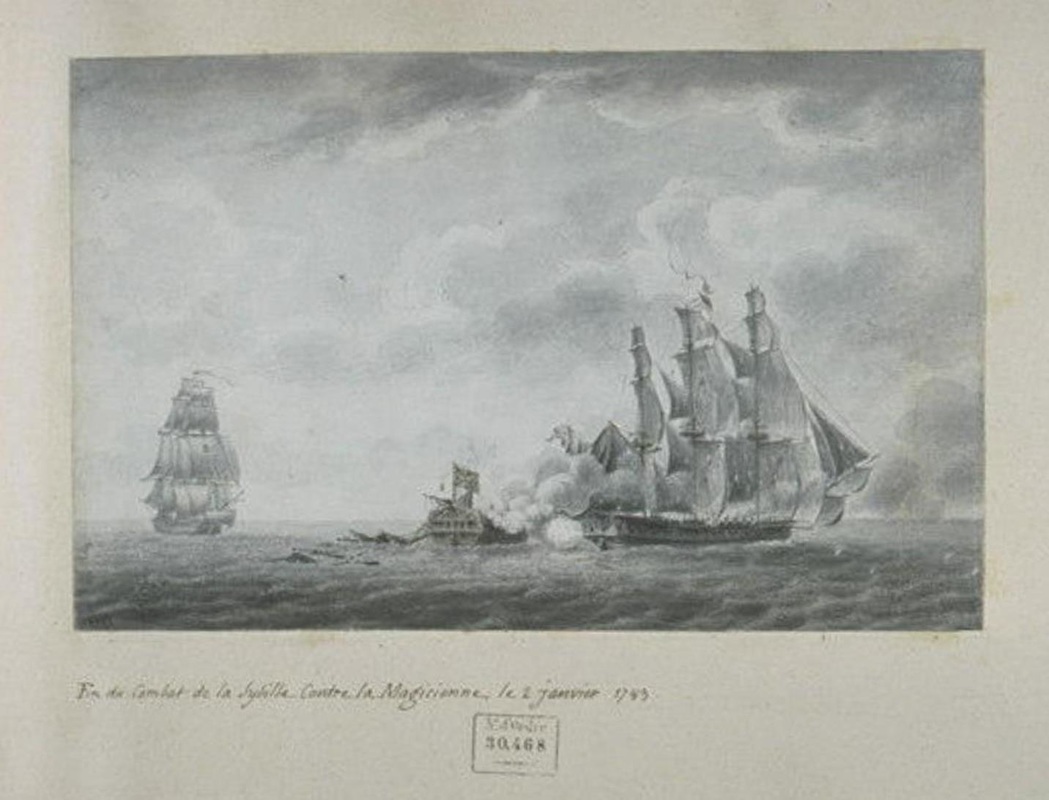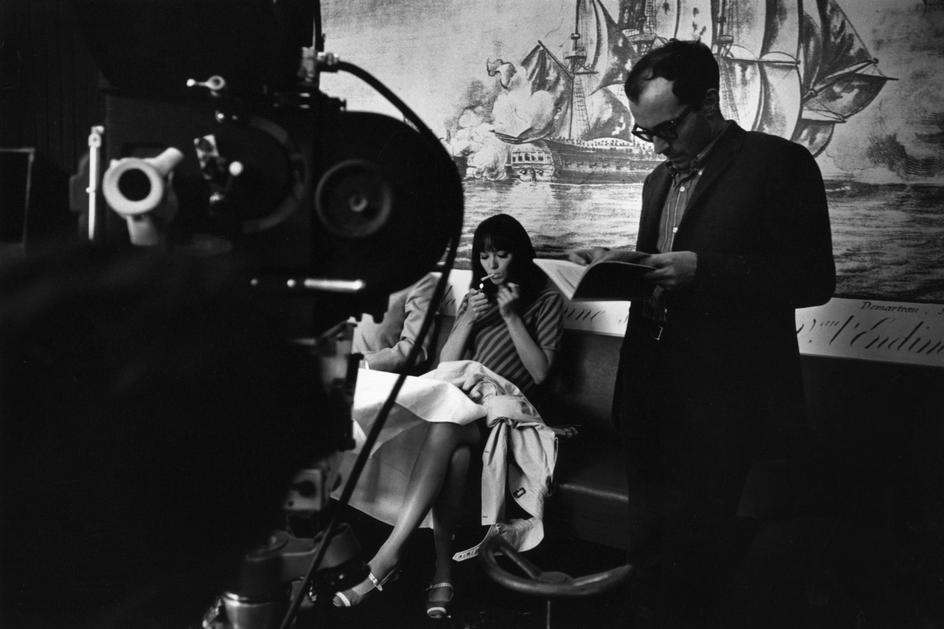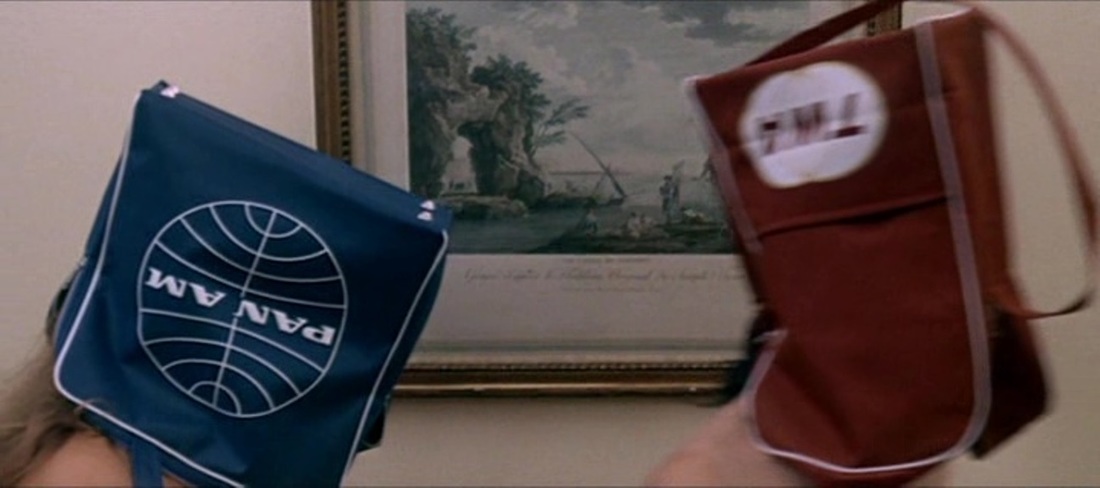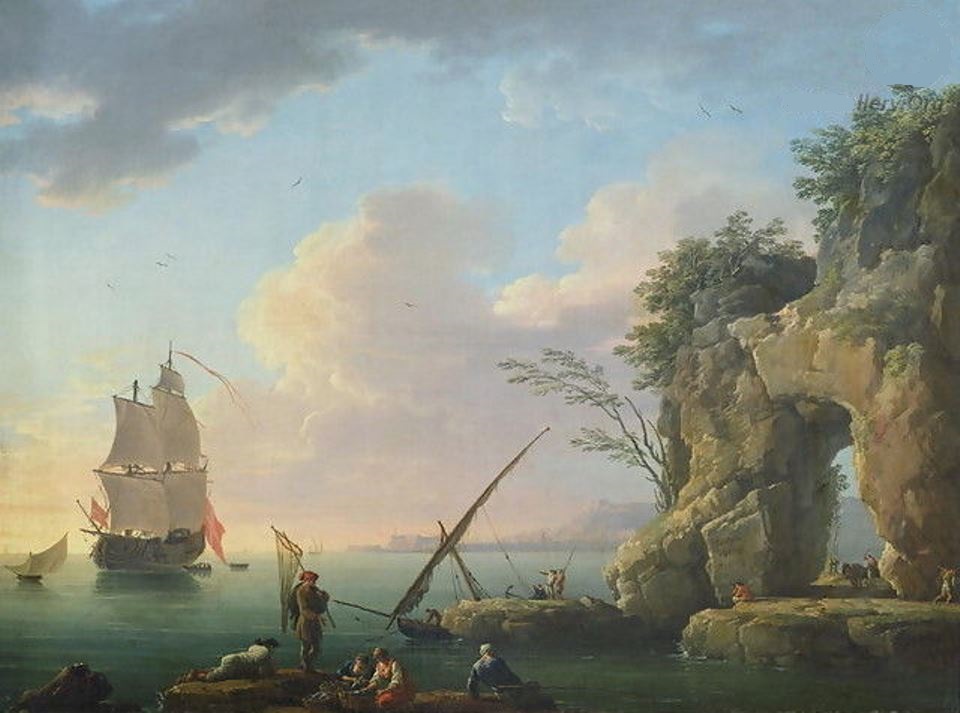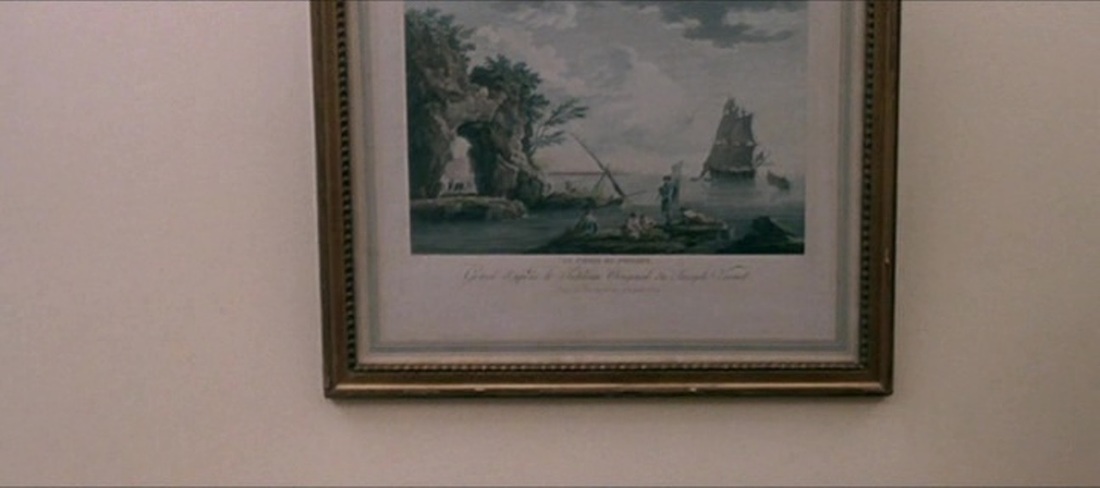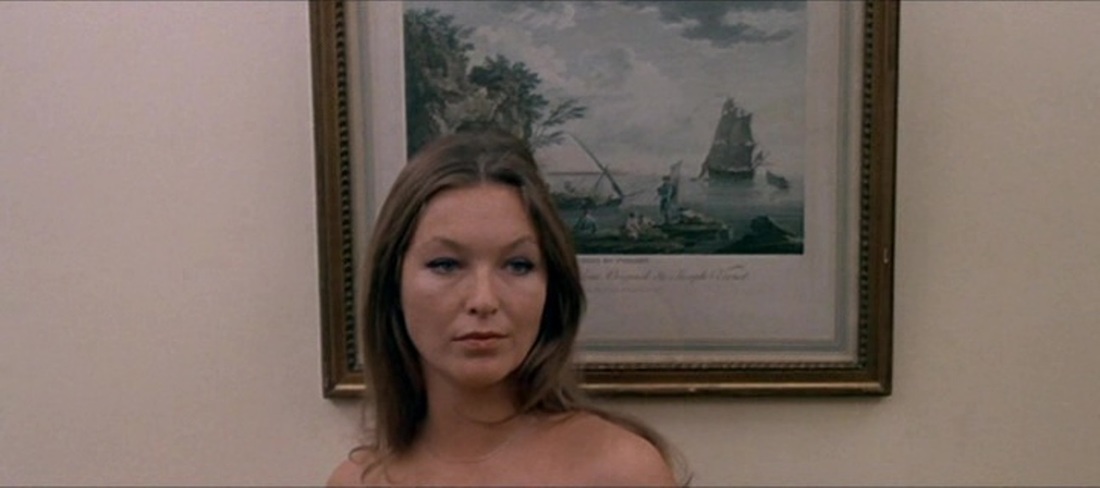Godardiana
This post gathers together corrections and additions to existing posts re. Godard on this site, as well as a few pieces of new information unconnected to other posts.
A bout de souffle, 1
The photograph that Jean Seberg (Patricia) has on her wall and in front of which she poses was taken by her husband François Moreuil. In his book of memoirs (Flash Back, 2011) he reproduces another photograph taken at the same time:
Moreuil accompanied Seberg for most of the shoot and appears twice in the film. The more substantial appearance is as a photographer at the Orly press conference:
Moreuil reproduces this photograph from the shoot in his book:
His other appearance is easy to miss. As Patricia sits at a café terrace (on the corner of the quai Saint Michel and the rue Saint Jacques), waiting for Michel to fetch his car, Moreuil is sitting at the next table, reading a magazine:
|
The magazine he is reading is an August 1959 issue of Jours de France with on the cover Brigitte Bardot, dressed for her latest film Babette s'en va-t-en guerre.
It is almost impossible to make out the picture on the cover and it doesn't seem that it is here as some kind of intertextual signpost - unlike the (unidentified) magazine cover with Bardot on the wall in Le Petit Soldat, or the Paris Match cover with Jean Seberg, in the same film: |
Moreuil also signals, with some pride, that his new car can be seen parked on the Champs Elysées as Seberg and Belmondo walk past it. He reproduces this photograph of his car:
This is actually a TR2, not a TR3. Moreuil also forgets that his car played a much more important role in the film. In the sequence where he is next to his wife as she waits for Michel to arrive with a car, we see Michel attempting to steal several different cars, one of which is Moreuil's TR2, parked round the corner on the rue Saint Julien le Pauvre:
A bout de souffle, 2
When Michel searches Patricia's room for money we see a copy of Life magazine in her drawer. This is the International version of Life, the July 20 1959 issue; the person on the cover is Jamaican singing personality Barbara Lewars.
A bout de souffle, 3
These photographs of Raoul Coutard at work were taken by Raymond Cauchetier at 19 and 21 rue du Général Moll, in the 17th arrondissement. No exterior views taken up here were used in the film. For more information about this location see here.
La Paresse
Later, after she has brought Eddie Constantine to her home (apparently Jacques Doniol-Valcroze's apartment near the Arc de Triomphe), he picks up the book and opens it at a different page:
The mentions of sleep ('sommeil') and yawning ('bâillant') make the connection between Beckett's text and the subject of the sketch, Constantine's profound laziness.
Vivre sa vie
One of the locations for Vivre sa vie that I wasn't able to identify when I first tried in 2008 (see here) was the café where, in an upstairs room, Nana puts a record on the jukebox and dances. An obvious clue I paid no attention to at the time was the sign reading 'Coupe B.C. Neuilly'. 'B.C.' probably stands for 'Billard Club' - the billiard table is a clue - and the café is probably in Neuilly-sur-Seine. The views we have of the ground floor don't give much help in identifying exactly where in Neuilly is the café:
I had written to the actress here, Odile Geoffroy, but she couldn't remember where the scene was shot.
On the first floor, however, there is something that might help identify the location:
On the first floor, however, there is something that might help identify the location:
The wrought iron grill at the window is distinctive enough in design to be evidence of identification, if a matching grill can be found on the first floor of a café in Neuilly. Here is the Hôtel du Château, on the rue du Château:
And here is a close-up of a grill at a first-floor window:
These Google Srteet View images date from July 2008. The Hôtel du Château has now been completely refurbished as Le Bon Hôtel. The café is now Le Brazza. I don't think the billiard room has survived.
Une femme mariée
The picture on the wall in the room at the Air Hotel, Orly, is Chagall's Le Cirque, from 1956:
Alphaville
The picture that Lemmy Caution uses for target practice in his room at the Hôtel Scribe is a spread by Alberto Vargas for the January 1965 issue of Playboy:
Made in U.S.A
The décor of this café features a very large blow-up of an eighteenth-century print representing a sea battle:
The battle was between the French ship La Sybille and the English ship HMS Magicienne (a French ship that had been captured by the English, hence its name). The action relates to the American War of Independence.
Made in U.S.A shows nothing of the image except the sea, but the title is part of the café's décor and can be made out on viewing the whole sequence. This photograph by Raymond Cauchetier of the shoot shows more of the image:
Made in U.S.A shows nothing of the image except the sea, but the title is part of the café's décor and can be made out on viewing the whole sequence. This photograph by Raymond Cauchetier of the shoot shows more of the image:
Deux ou trois choses que je sais d'elle
The picture in front of which two prostitutes walk back and forth with American airline bags on their heads is a 1748 seascape by Horace Vernet:
The print of this painting has reversed the image:
